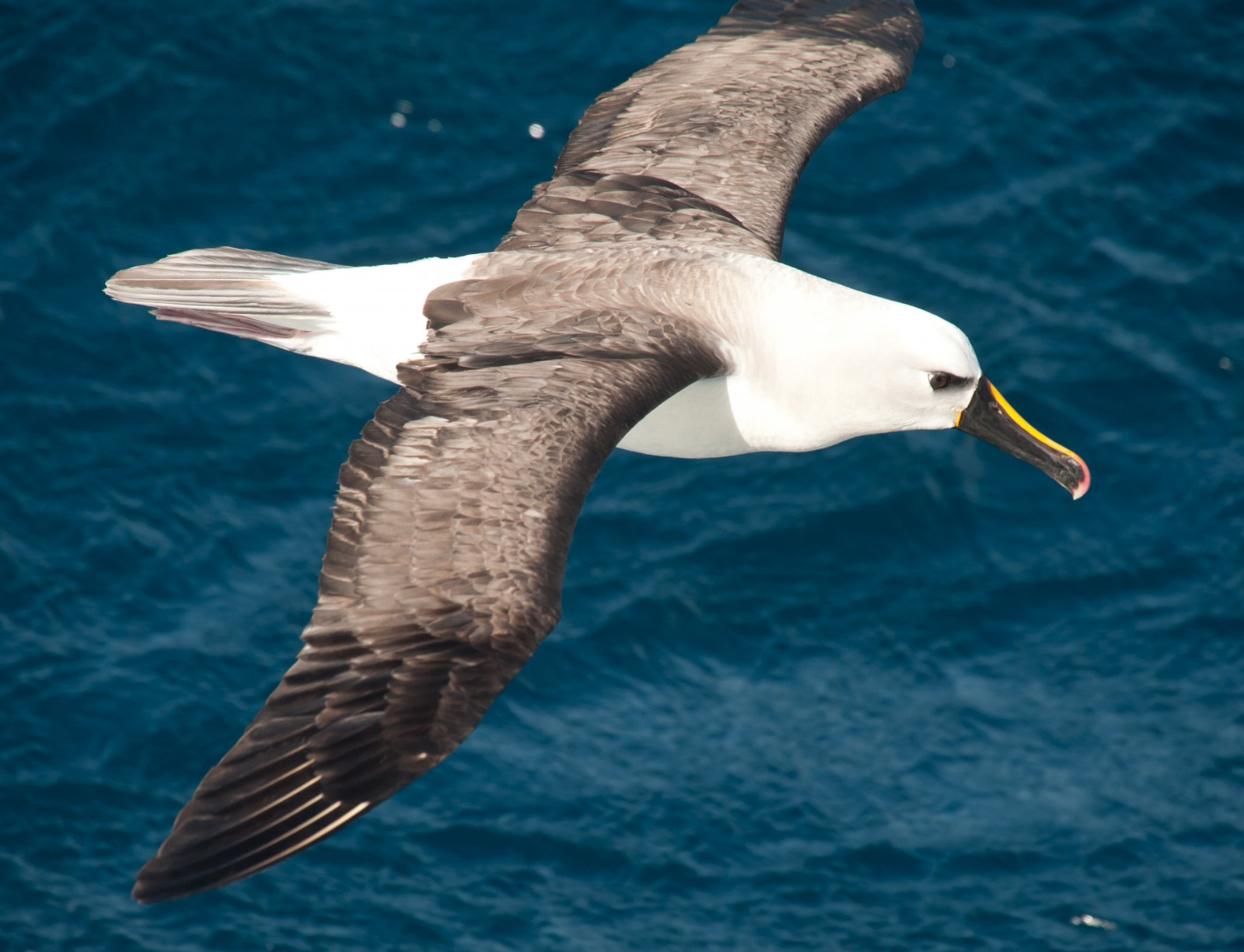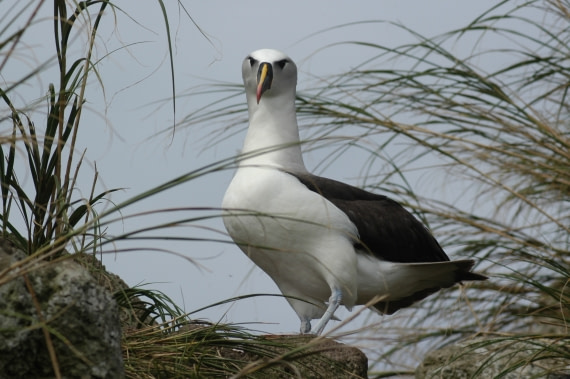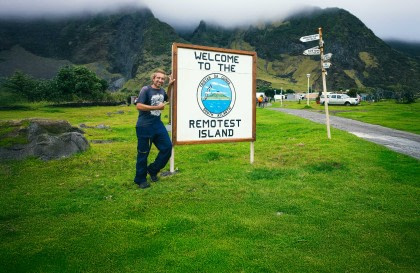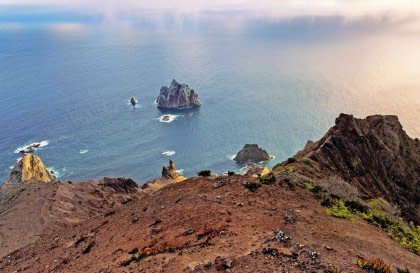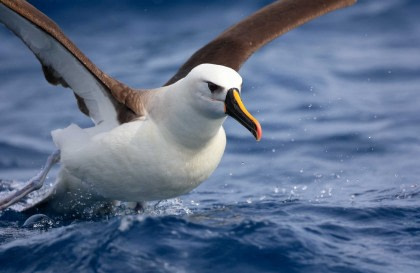Name: Atlantic yellow-nosed albatross (Thalassarche chlororhynchos)
Length: 80 cm.
Weight: 2.2 kg.
Location: South Atlantic between South America and Africa. Breeding areas are on mid-Atlantic islands.
Conservation status: Endangered.
Diet: Squid, fish, crustaceans.
Appearance: White body, feet, and head with black wings and saddle area. Large dark patch around the eye. Black bill with a yellow strip along the top which ends in a pink curved tip.
How do Atlantic Yellow-nosed Albatrosses feed?
Atlantic Yellow-nosed Albatrosses have a number of different ways in which they feed. First, they are divers, plunging under schools of fish which they then herd towards the surface where they are easier to catch.
They are also bullies, stealing food from other sea birds like the White-chinned Petrel.
Finally, they are one of the species of bird that will closely follow fishing boats in order to pick up any offal thrown overboard.

Are Atlantic Yellow-nosed Albatrosses social?
Atlantic Yellow-nosed Albatrosses form colonies during breeding season. They also migrate in groups.
How fast do Atlantic Yellow-nosed Albatrosses fly?
Atlantic Yellow-nosed Albatrosses fly at average speeds of 40 km per hour, and at extremes they can burst up to a little over 100 km per hour.
What are Atlantic Yellow-nosed Albatross birthing rituals like?
Atlantic Yellow-nosed Albatrosses reach sexual maturity around 10 years of age. They generally breed every other year, and are monogamous.
The breeding season begins in September. The albatrosses form breeding colonies on the islands of the mid-Atlantic between Africa and South America.
The nests are raised affairs built from peat, feathers, vegetation, and mud. One egg is laid. Both parents will take turns incubating the egg and taking care of the chick once it hatches, switching off to go fishing.
The chick fledges (takes its first flight) around the beginning of April. Once fledged the chicks will not return to land again for up to 5 years.

How long do Atlantic Yellow-nosed Albatrosses live?
Atlantic Yellow-nosed Albatrosses can live up to about 60 years.
How many Atlantic Yellow-nosed Albatrosses are there today?
There are an estimated (as of 2001) 55,000 to 83,200 Atlantic Yellow-nosed Albatrosses in the world today. The population is in decline since the low birth rate is not keeping up with the death rate amongst the species.
Do Atlantic Yellow-nosed Albatrosses have any natural predators?
Atlantic Yellow-nosed Albatrosses are rarely prey for other animals due to the remoteness of their breeding grounds and their pelagic (always-at-sea) lifestyle outside of the breeding season.

7 Attractive Atlantic Yellow-Nosed Albatross Facts
- Atlantic Yellow-nosed Albatrosses are part of the Procellariiformes order which includes Diving Petrels, Fulmars, Shearwaters, and Storm Petrels.
- Like other Procellariiformes Atlantic Yellow-nosed Albatrosses form a stomach oil that’s kept in a glandular part of the stomach called the proventriculus. This oil is used to feed chicks, to feed themselves during long flights, or can be sprayed out as a foul-smelling defensive measure against predators.
- They have a gland found above their nasal passage that excretes a saline solution in order to get rid of the excess salt that is swallowed while feeding in the ocean’s salty waters.
- The biggest threat to Atlantic Yellow-nosed Albatrosses is longline fishing. Longline fishing boats trail a line of baited hooks at depths appropriate to the kind of fish they are trying to catch. The albatrosses see this as a source of food and will dive for the hooks.
- The Atlantic Yellow-nosed Albatross is a mollymawk – a range of medium-sized albatrosses. “Mollymawk” comes from the Dutch word mallemok which breaks down as mal, meaning “foolish” and mok meaning “gull.”
- Like others of its species, the Atlantic Yellow-nosed Albatross is a soarer, able to fly for kilometres without flapping its wings.
- A flock of Albatrosses is also known as a “flight”, “rookery”, or “weight”.
